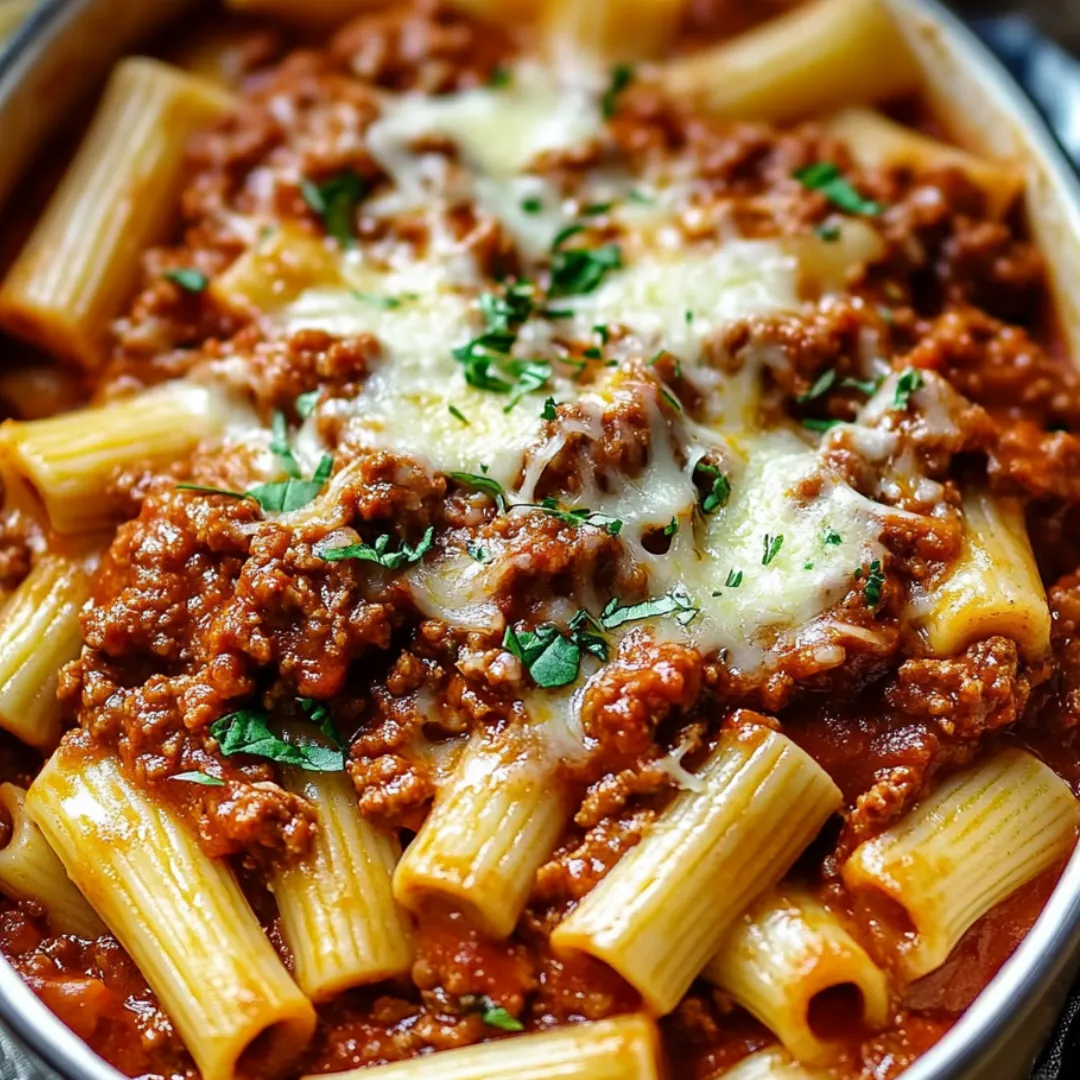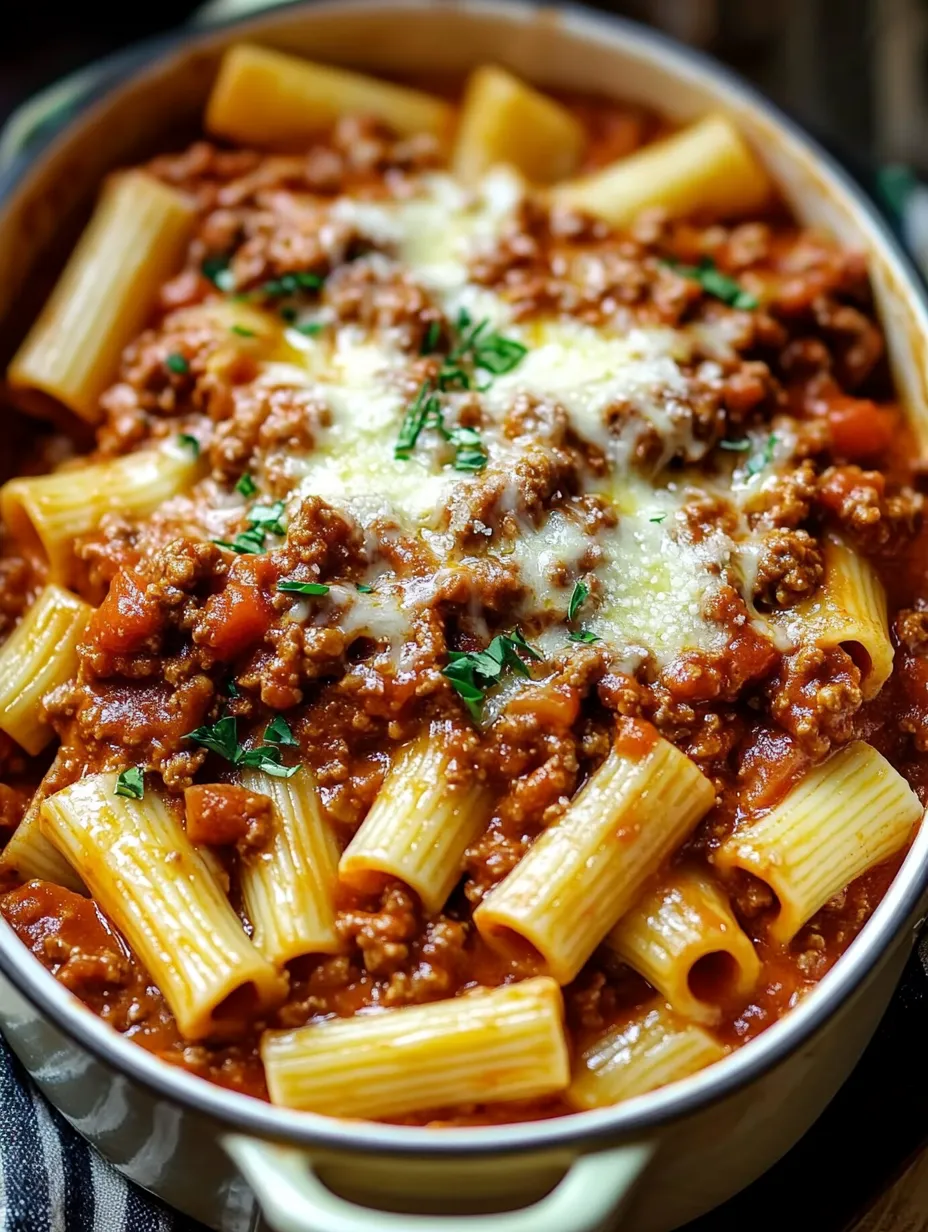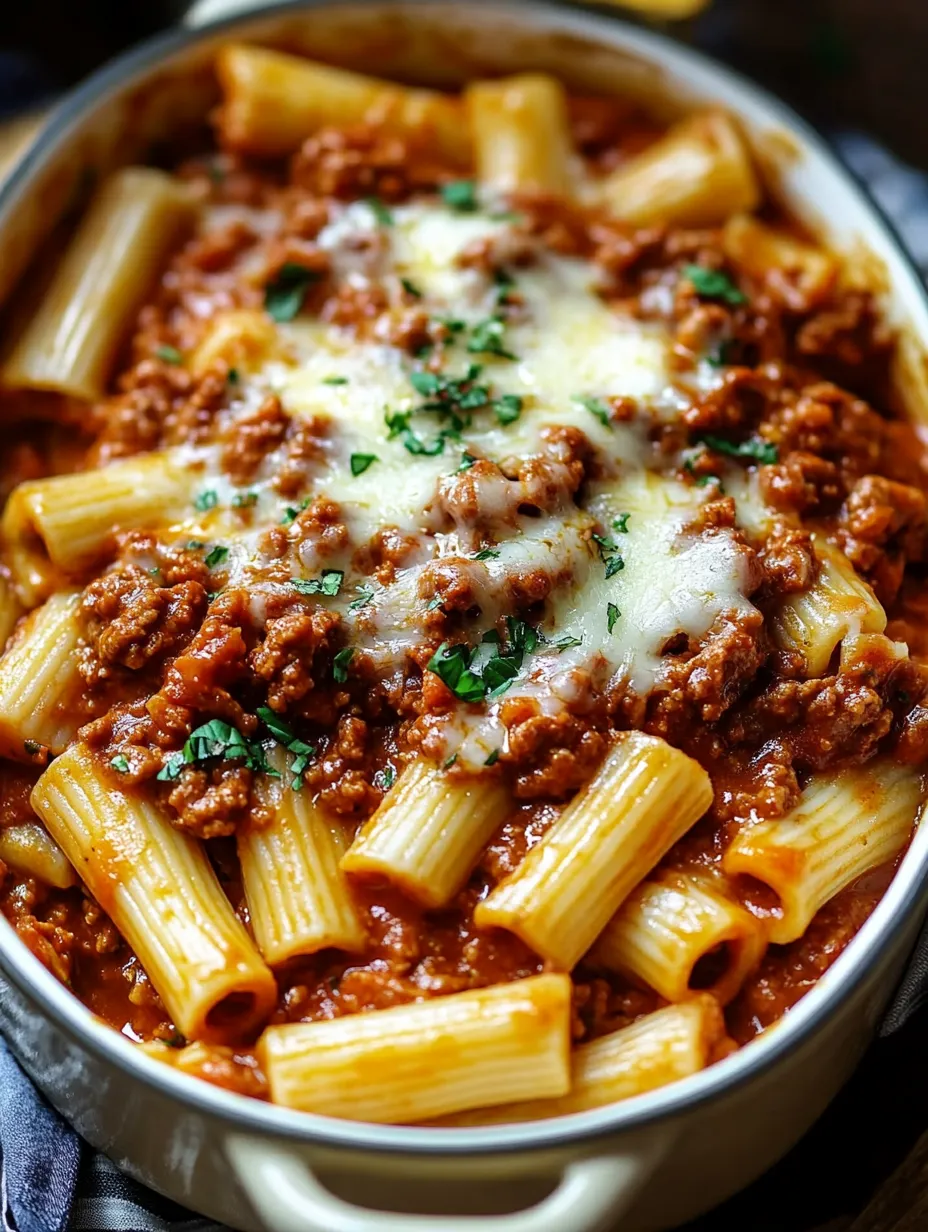 Pin it
Pin it
Classic Bolognese transforms humble ingredients into something truly magical through the patient alchemy of slow cooking. The magic happens as meat browns and caramelizes, vegetables soften and sweeten, and tomatoes break down into a velvety cloak that hugs each strand of pasta perfectly. Unlike quick-cooking sauces that deliver just surface flavor, this traditional recipe builds layers of depth through careful technique and unhurried simmering. The combination of beef and pork creates a perfect balance of richness and delicate sweetness, while the unlikely addition of milk tames acidity and creates a silky mouthfeel impossible to achieve otherwise. This isn't just sauce—it's the soul of countless family gatherings, the foundation of memorable meals, and the kind of cooking that fills your home with an aroma that draws everyone to the kitchen hours before dinner.
I've been perfecting this recipe for years, ever since my first trip to Bologna where I tasted the real thing and became obsessed with creating that same magic at home. My first attempts were rushed and one-dimensional, but I've learned that patience truly is the key ingredient. Now, making Bolognese has become a Sunday afternoon ritual during cooler months—the rhythmic chopping of vegetables, the gentle burble of the simmering pot, and the knowledge that my family will gather around the table later with appreciative smiles. Last winter, my mother-in-law (a notoriously picky eater) asked for the recipe after her second helping, which might be my greatest culinary achievement to date.
Essential Ingredients
- Ground Meat: The foundation of any true Bolognese, providing rich flavor and hearty texture. Traditional recipes use a combination of beef and pork (1 pound beef, ½ pound pork) for the perfect balance—beef delivers robust flavor while pork adds subtle sweetness and necessary fat. Choose medium-fat content beef (80/20) for sufficient flavor without excessive greasiness, and don't substitute extra lean meat which will result in a drier, less flavorful sauce.
- Soffritto: This Italian flavor base of finely chopped onion, carrot, and celery (one medium onion, two carrots, two celery stalks) creates the aromatic foundation of the sauce. Take time to chop these vegetables uniformly and very small, almost to a mince, allowing them to melt into the final sauce rather than remaining distinct pieces. The natural sweetness of properly sautéed soffritto balances the acidity of tomatoes while adding tremendous depth.
- Tomatoes: Provides the tangy brightness and body to the sauce. One 28-ounce can of crushed tomatoes yields the perfect consistency—avoid whole tomatoes (too watery when broken down) or tomato sauce (too smooth). San Marzano varieties offer superior flavor if available, with their perfect balance of sweetness and acidity. Two tablespoons of tomato paste further concentrates the flavor, giving the sauce its characteristic rich red color and intensity.
- White Wine: Acts as a deglazing agent and flavor enhancer, adding complexity and brightness to cut through the richness. One cup of dry white wine (not sweet) evaporates during cooking, leaving behind subtle acidity and fruit notes that balance the sauce. Red wine is sometimes used but can overpower the more delicate meat flavors.
- Milk: The secret ingredient that transforms Bolognese from good to extraordinary. One cup of whole milk, added slowly and allowed to reduce, tenderizes the meat proteins and counteracts the acidity of the tomatoes. The result is a velvety, rounded sauce with incredible mouthfeel that commercial versions can never achieve. This step is non-negotiable in authentic Bolognese.
- Herbs and Seasonings: Simple seasonings allow the main ingredients to shine. One teaspoon each of dried oregano and basil provide subtle herbaceous notes without overwhelming, while salt and freshly ground black pepper to taste enhance the natural flavors. For those who enjoy a slight warmth, ¼ teaspoon of red pepper flakes adds dimension without making the sauce spicy.
- Olive Oil: Creates the foundation for properly developing flavors. Two tablespoons of good quality olive oil (not necessarily extra virgin, which can be wasted in long-cooking recipes) provides the right medium for sautéing the vegetables and browning the meat, imparting a subtle fruity undertone to the finished sauce.
 Pin it
Pin it
Step-by-Step Cooking Instructions
- Prepare Your Soffritto with Care:
- Begin with the crucial flavor foundation. Finely dice one medium onion, two carrots, and two celery stalks into pieces no larger than ¼-inch—uniformity is key for even cooking. Heat two tablespoons of olive oil in a heavy-bottomed Dutch oven or large pot over medium heat until it shimmers. Add the diced vegetables along with a pinch of salt to help them release moisture. Cook gently for 8-10 minutes, stirring occasionally, until they soften and become translucent but not browned. The goal is to coax out the natural sweetness without developing any caramelization. When properly done, the vegetables should be soft enough that they would easily smash against the side of the pot. Add three minced garlic cloves and cook for just 30 seconds more until fragrant—adding garlic too early risks burning it and creating bitter flavors.
- Brown the Meat for Maximum Flavor:
- Increase the heat to medium-high and add one pound of ground beef and half a pound of ground pork to the softened vegetables. Season with a teaspoon of salt and several grinds of fresh black pepper. Use a wooden spoon to break the meat into small pieces, but—and this is crucial—don't constantly stir. Allow the meat to develop a brown crust against the hot pan before stirring, which creates the complex Maillard reaction flavors essential to depth. Continue cooking until no pink remains and you see a significant amount of caramelization on both the meat and the bottom of the pan, about 8-10 minutes. This careful browning establishes the flavor foundation that will carry through the finished sauce.
- Deglaze with Milk in Stages:
- Now comes the step that separates authentic Bolognese from ordinary meat sauce. Pour half a cup of whole milk into the pot—you'll be rewarded with a satisfying sizzle as it hits the hot pan. Use your wooden spoon to scrape up the flavorful browned bits from the bottom of the pot as the milk bubbles. Reduce the heat to medium-low and allow the milk to simmer gently until it's completely absorbed by the meat mixture, about 5-7 minutes. The milk works to tenderize the meat proteins and begins building the sauce's signature silky texture. It will seem strange to add milk to a tomato sauce, but this traditional technique dramatically improves the final flavor and mouthfeel.
- Add Wine and Reduce Properly:
- Pour in one cup of dry white wine, again using your spoon to scrape any remaining browned bits from the bottom of the pot. Bring to a gentle simmer and allow the wine to reduce by at least half, about 5-7 minutes. This not only adds acidity and complex flavor but also burns off the alcohol while concentrating the fruity notes of the wine. You should no longer smell raw alcohol but rather a rich, fragrant base developing. This reduction is not about speed but about patient development of flavor, so maintain a gentle simmer rather than a vigorous boil.
- Build the Tomato Base Gradually:
- Add two tablespoons of tomato paste to the pot, stirring constantly for about two minutes until it darkens slightly and coats the meat mixture. This brief 'cooking' of the tomato paste removes the raw flavor and enhances its sweetness. Next, add one 28-ounce can of crushed tomatoes, stirring well to incorporate with the meat mixture. Season with one teaspoon each of dried oregano and dried basil, plus ¼ teaspoon of red pepper flakes if desired. Add half a cup more of milk at this stage, stirring gently to incorporate. This dual-stage milk addition is another secret to the sauce's uniquely silky texture.
- Simmer with Patience and Attention:
- Here's where real Bolognese is made or broken. Bring the sauce to a gentle bubble, then reduce the heat to the lowest possible setting that maintains the barest simmer—just a few bubbles breaking the surface occasionally. Partially cover the pot, leaving about an inch open to allow slow evaporation and concentration. Now, exercise patience. Simmer the sauce for at least 2-3 hours, stirring occasionally and checking that it's not reducing too quickly. If it becomes too thick, add a few tablespoons of water or beef broth. This extended, gentle cooking allows the flavors to meld and develop in ways that simply cannot be rushed. The sauce is ready when it's deeply fragrant, considerably thickened, and the oil has slightly separated around the edges—a traditional indicator of properly cooked Bolognese.
- Finish with Finesse:
- During the final 30 minutes of cooking, remove the lid completely to allow excess liquid to evaporate until the sauce reaches your desired consistency. It should be thick enough to coat pasta without being watery, but not so dry that it seems like meat with tomato flavoring. Taste and adjust seasoning with additional salt and pepper as needed—flavors concentrate during long cooking, so the perfect amount of salt at the beginning may not be enough at the end. If the sauce tastes slightly acidic, you can add a final tablespoon of butter off the heat, which will round out the flavors beautifully. Allow the sauce to rest, off heat but still in the pot, for 10-15 minutes before serving—this brief rest, like with many foods, allows the flavors to settle and improve.
- Serve with Appropriate Pasta:
- Authentic Bolognese is traditionally served with tagliatelle or other flat, ribbon-like pasta which provides the perfect surface for the sauce to cling to. Cook one pound of pasta to al dente according to package directions, being careful not to overcook. Unlike American adaptations, authentic Italian Bolognese uses pasta as the star, with sauce as its enhancement rather than drowning it. Toss the drained pasta with a ladle of sauce in the pasta pot first, allowing each strand to be lightly coated, then top with additional sauce on each plate. Finish with freshly grated Parmigiano-Reggiano and a sprinkle of chopped parsley for brightness.
The Magic of Classic Bolognese
You Must Know
The first time I made this sauce for my Italian friend Marco, I skipped the milk, thinking it was an unusual addition I could omit. He tasted it politely but then gently explained that the milk isn't optional—it's what gives Bolognese its distinctive silky character. When I made it again properly, the difference was remarkable. The sauce went from being good to having that elusive quality that makes you close your eyes when you take the first bite. Now I consider the milk step sacred, and watching it slowly absorb into the meat mixture has become one of the most satisfying parts of the cooking process. This sauce has taught me that sometimes there are no shortcuts to greatness.
Perfect Pasta Pairings
While spaghetti Bolognese may be internationally famous, Italians rarely serve this sauce with thin, round pasta shapes. In Bologna, the sauce's birthplace, it's traditionally paired with tagliatelle—flat, ribbon-like pasta with the perfect surface area for the sauce to cling to. Other excellent options include pappardelle, fettuccine, or mafaldine, whose ruffled edges catch delicious pockets of sauce. For a different presentation, try wide tubes like paccheri or rigatoni, which allow the sauce to collect inside each piece. If using dried pasta, choose bronze-die extruded varieties which have a rougher texture that holds sauce better than smoother, mass-produced options.
Make-Ahead Mastery
One of the greatest advantages of Bolognese is its make-ahead potential. The sauce can be refrigerated for up to 5 days, with flavors that continue to improve after the first 24 hours. For longer storage, cool the sauce completely before freezing in airtight containers or heavy-duty freezer bags for up to 3 months. Thaw overnight in the refrigerator before gently reheating on the stovetop over medium-low heat, adding a splash of broth if needed to restore the proper consistency. This freezer-friendly nature makes Bolognese perfect for batch cooking—I often make a double batch and freeze half in portion-sized containers for quick weeknight meals that taste like Sunday cooking.
Beyond Pasta Applications
While pasta may be the traditional partner, well-made Bolognese sauce is incredibly versatile. Use it as the meat layer in lasagna for depth beyond basic meat sauce, or stuff it into bell peppers with rice and top with cheese for a creative twist. Spread it on pizza in place of traditional sauce and top with mozzarella for a hearty 'pizza Bolognese,' or spoon it over creamy polenta for a warming winter meal. For an impressive appetizer, top crostini with a spoonful of Bolognese and a shaving of Parmesan. The sauce even makes a luxurious filling for savory crepes when mixed with a bit of béchamel and rolled with thin slices of prosciutto.
 Pin it
Pin it
Wine Pairing Wisdom
The rich, complex flavors of Bolognese call for wines that can stand up to its depth while complementing its savory-sweet balance. Traditional Italian pairings include Sangiovese-based wines like Chianti Classico or Brunello di Montalcino, whose bright acidity cuts through the richness while their earthy notes echo the sauce's complexity. For non-Italian options, try a medium-bodied Merlot, whose fruit-forward character balances the sauce without overwhelming it, or a Côtes du Rhône with its blend of spice and fruit. If you prefer white wine, a full-bodied Chardonnay with subtle oak influence can provide a contrasting but complementary pairing that stands up to the sauce's richness.
I've been making this sauce for nearly a decade now, and it's become something of a signature dish in my home. There's a rhythm to its preparation that I find deeply satisfying—the methodical chopping of vegetables, the patient stirring and watching as each component transforms and melds with the others. When my kitchen fills with its rich aroma, it signals to everyone that something special is coming. I've served it for casual family dinners and elegant dinner parties alike, and there's always a moment of appreciative silence when people take their first bite. That moment tells me everything I need to know about why some recipes endure through generations, crossing borders and binding families together around tables. This isn't just sauce—it's tradition, comfort, and love, ladled generously over pasta.
Frequently Asked Questions
- → Can I make this bolognese sauce ahead of time?
- Yes! This sauce actually improves with time. Make it a day or two ahead and refrigerate. Reheat gently on the stove before serving.
- → Can I freeze bolognese sauce?
- Absolutely. Cool the sauce completely, then portion into freezer-safe containers. Freeze for up to 3 months. Thaw overnight in the refrigerator before reheating.
- → Why do you add milk to bolognese?
- Milk adds richness and helps tenderize the meat, creating a silkier texture. It's a traditional ingredient in authentic Italian recipes.
- → What pasta goes best with bolognese?
- Traditional choices are tagliatelle, pappardelle, or fettuccine. The wide, flat noodles hold the chunky sauce well. Avoid thin pastas like spaghetti.
- → Can I use a slow cooker for this recipe?
- Yes. Follow steps through adding tomatoes, then transfer to a slow cooker. Cook on low for 6-8 hours. The flavor develops beautifully with slow cooking.
